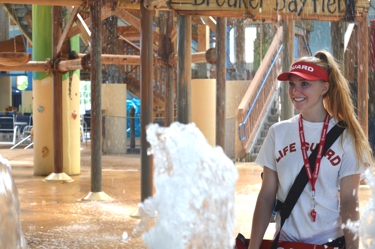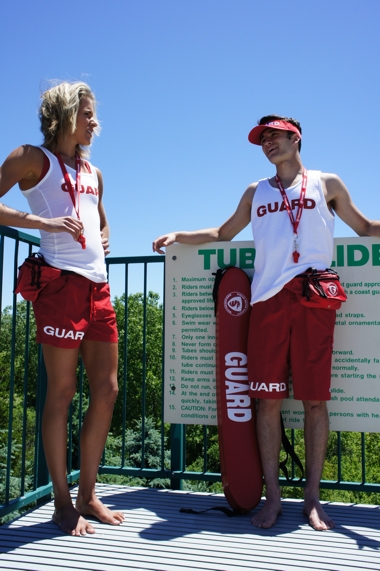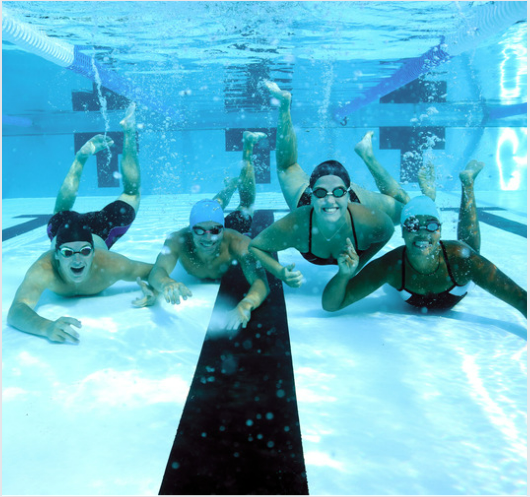What’s the Difference Between Seasonal and Year-Round Lifeguard Facilities?

Lifeguard
|
October 25, 2017
When a dog turns 70 years old, we think that they are really 10. This idea of dog years is a way to understand the toll time takes on a dog. If dogs have dog years and the ratio is 7:1, then it kind of works the same with lifeguards. There is a big difference between seasonal facilities and facilities that are operated year round. A lifeguard that works outdoors may describe to someone that they have been a guard for two years. This would equate to two seasons at their facility or roughly six months. A year-round guard can tell someone they have two years of experience at their park and this would equate to eight seasons or 24 months. These are two very different numbers. Maybe the 24 months have been wonderful for that lifeguard and the 6 months for the seasonal lifeguard have been terrible. Operators of any aquatic facility come with their own sets of challenges in how they are managed, and what it takes to be successful. Neither is ever easy but there are things that should be understood about each.
 Seasonal facilities are more like a sprint, whereas year-round facilities are a marathon. A marathon runner undoubtedly has run more miles than a sprinter. But if you ask a marathon runner to race a sprinter, chances are they’d lose. This doesn’t mean that they are not an accomplished runner. If a sprinter ran a half marathon against a distance runner, it isn’t likely their time would be better. The skills that are needed for each are just different.
For example, seasonal facilities need to do everything quickly. By the time that a challenge is recognized, evaluated, corrected, and revisited, the amount of time that could have passed may not allow for improvements during the same season. For seasonal facilities, the time it takes to make a decision and act can determine if something gets done or not. For year-round facilities, the decisions made must be well thought out as some of the consequences may impact the team or organization a few months from now. Where a seasonal facility may be closed by then, the ramifications for a year-round facility may take months and need to be considered when making decisions.
Staffing challenges can vary as well. How you recruit, hire, train, and retain your team can be very different. Staffing challenges for a seasonal facility are difficult to attempt to correct mid-season because the time it takes to recruit, hire, and onboard someone can take weeks. Trying to introduce new team members into an already close group can also be challenging. Year-round facilities contend with school years, operational hours, and trying to keep the lifeguards running that marathon. These challenges can create havoc in trying to maintain a uniform experience month to month, and may allow for incentives and motivational tactics to try and keep the team engaged throughout the seasons.
There are also differences for each segment with regards to lifeguard uniforms, lifeguard equipment, and lifeguard gear ordering and purchases. Smart spending is important, but with seasonal facilities, equipment needs must be met quickly or wait until the following year. For year-round facilities, purchases can be timed and planned accordingly. It can be difficult to wait for purchases that were planned for a few months from now. Budgeting can be a difficult task when trying to foresee needs throughout the year. Planning often includes preventative maintenance of equipment and the incorporation of the resources life expectancies. When you have a good idea of how long something will last, a buying strategy can be developed.
Seasonal facilities are more like a sprint, whereas year-round facilities are a marathon. A marathon runner undoubtedly has run more miles than a sprinter. But if you ask a marathon runner to race a sprinter, chances are they’d lose. This doesn’t mean that they are not an accomplished runner. If a sprinter ran a half marathon against a distance runner, it isn’t likely their time would be better. The skills that are needed for each are just different.
For example, seasonal facilities need to do everything quickly. By the time that a challenge is recognized, evaluated, corrected, and revisited, the amount of time that could have passed may not allow for improvements during the same season. For seasonal facilities, the time it takes to make a decision and act can determine if something gets done or not. For year-round facilities, the decisions made must be well thought out as some of the consequences may impact the team or organization a few months from now. Where a seasonal facility may be closed by then, the ramifications for a year-round facility may take months and need to be considered when making decisions.
Staffing challenges can vary as well. How you recruit, hire, train, and retain your team can be very different. Staffing challenges for a seasonal facility are difficult to attempt to correct mid-season because the time it takes to recruit, hire, and onboard someone can take weeks. Trying to introduce new team members into an already close group can also be challenging. Year-round facilities contend with school years, operational hours, and trying to keep the lifeguards running that marathon. These challenges can create havoc in trying to maintain a uniform experience month to month, and may allow for incentives and motivational tactics to try and keep the team engaged throughout the seasons.
There are also differences for each segment with regards to lifeguard uniforms, lifeguard equipment, and lifeguard gear ordering and purchases. Smart spending is important, but with seasonal facilities, equipment needs must be met quickly or wait until the following year. For year-round facilities, purchases can be timed and planned accordingly. It can be difficult to wait for purchases that were planned for a few months from now. Budgeting can be a difficult task when trying to foresee needs throughout the year. Planning often includes preventative maintenance of equipment and the incorporation of the resources life expectancies. When you have a good idea of how long something will last, a buying strategy can be developed.
 When you think about spending your budget dollars, you need to have a plan to build revenue as well. For seasonal facilities, barring some bad weather, you hope you’re at capacity for most of the standard 100 days. There isn’t too much room to accommodate the rollercoaster of ups and downs. For most year-round facilities, the periods of ups are most often met with periods of downs. Every operator works to market their facility and find visitors to fill the pools. However, being aware of these periods and knowing how to ride those waves is a skill set that is valuable for any year-round operator. The facility can adjust and flex up or down depending on time of year, school schedule, events and holidays, and maintenance schedules. This strategy can be the difference between red and black numbers. A couple days of sloppy performance can blow a month’s budget if not watched.
Every aquatic facility owner, officer, or operator has a set of challenges that they need to overcome. The amount of time that one has spent in aquatics should be taken into consideration when thinking about their contribution, but that doesn’t mean that it’s easy. There are differences about how a seasonal facility is operated and its unique needs. Operating year-round can be challenging to stay the course and keep the stamina year after year. Whether you are two years or eight seasons old, the facility you operate is distinct and requires a unique skill set to manage. Before you compare any aquatic facility, you should consider these elements and put yourself in their shoes.
When you think about spending your budget dollars, you need to have a plan to build revenue as well. For seasonal facilities, barring some bad weather, you hope you’re at capacity for most of the standard 100 days. There isn’t too much room to accommodate the rollercoaster of ups and downs. For most year-round facilities, the periods of ups are most often met with periods of downs. Every operator works to market their facility and find visitors to fill the pools. However, being aware of these periods and knowing how to ride those waves is a skill set that is valuable for any year-round operator. The facility can adjust and flex up or down depending on time of year, school schedule, events and holidays, and maintenance schedules. This strategy can be the difference between red and black numbers. A couple days of sloppy performance can blow a month’s budget if not watched.
Every aquatic facility owner, officer, or operator has a set of challenges that they need to overcome. The amount of time that one has spent in aquatics should be taken into consideration when thinking about their contribution, but that doesn’t mean that it’s easy. There are differences about how a seasonal facility is operated and its unique needs. Operating year-round can be challenging to stay the course and keep the stamina year after year. Whether you are two years or eight seasons old, the facility you operate is distinct and requires a unique skill set to manage. Before you compare any aquatic facility, you should consider these elements and put yourself in their shoes.
 Seasonal facilities are more like a sprint, whereas year-round facilities are a marathon. A marathon runner undoubtedly has run more miles than a sprinter. But if you ask a marathon runner to race a sprinter, chances are they’d lose. This doesn’t mean that they are not an accomplished runner. If a sprinter ran a half marathon against a distance runner, it isn’t likely their time would be better. The skills that are needed for each are just different.
For example, seasonal facilities need to do everything quickly. By the time that a challenge is recognized, evaluated, corrected, and revisited, the amount of time that could have passed may not allow for improvements during the same season. For seasonal facilities, the time it takes to make a decision and act can determine if something gets done or not. For year-round facilities, the decisions made must be well thought out as some of the consequences may impact the team or organization a few months from now. Where a seasonal facility may be closed by then, the ramifications for a year-round facility may take months and need to be considered when making decisions.
Staffing challenges can vary as well. How you recruit, hire, train, and retain your team can be very different. Staffing challenges for a seasonal facility are difficult to attempt to correct mid-season because the time it takes to recruit, hire, and onboard someone can take weeks. Trying to introduce new team members into an already close group can also be challenging. Year-round facilities contend with school years, operational hours, and trying to keep the lifeguards running that marathon. These challenges can create havoc in trying to maintain a uniform experience month to month, and may allow for incentives and motivational tactics to try and keep the team engaged throughout the seasons.
There are also differences for each segment with regards to lifeguard uniforms, lifeguard equipment, and lifeguard gear ordering and purchases. Smart spending is important, but with seasonal facilities, equipment needs must be met quickly or wait until the following year. For year-round facilities, purchases can be timed and planned accordingly. It can be difficult to wait for purchases that were planned for a few months from now. Budgeting can be a difficult task when trying to foresee needs throughout the year. Planning often includes preventative maintenance of equipment and the incorporation of the resources life expectancies. When you have a good idea of how long something will last, a buying strategy can be developed.
Seasonal facilities are more like a sprint, whereas year-round facilities are a marathon. A marathon runner undoubtedly has run more miles than a sprinter. But if you ask a marathon runner to race a sprinter, chances are they’d lose. This doesn’t mean that they are not an accomplished runner. If a sprinter ran a half marathon against a distance runner, it isn’t likely their time would be better. The skills that are needed for each are just different.
For example, seasonal facilities need to do everything quickly. By the time that a challenge is recognized, evaluated, corrected, and revisited, the amount of time that could have passed may not allow for improvements during the same season. For seasonal facilities, the time it takes to make a decision and act can determine if something gets done or not. For year-round facilities, the decisions made must be well thought out as some of the consequences may impact the team or organization a few months from now. Where a seasonal facility may be closed by then, the ramifications for a year-round facility may take months and need to be considered when making decisions.
Staffing challenges can vary as well. How you recruit, hire, train, and retain your team can be very different. Staffing challenges for a seasonal facility are difficult to attempt to correct mid-season because the time it takes to recruit, hire, and onboard someone can take weeks. Trying to introduce new team members into an already close group can also be challenging. Year-round facilities contend with school years, operational hours, and trying to keep the lifeguards running that marathon. These challenges can create havoc in trying to maintain a uniform experience month to month, and may allow for incentives and motivational tactics to try and keep the team engaged throughout the seasons.
There are also differences for each segment with regards to lifeguard uniforms, lifeguard equipment, and lifeguard gear ordering and purchases. Smart spending is important, but with seasonal facilities, equipment needs must be met quickly or wait until the following year. For year-round facilities, purchases can be timed and planned accordingly. It can be difficult to wait for purchases that were planned for a few months from now. Budgeting can be a difficult task when trying to foresee needs throughout the year. Planning often includes preventative maintenance of equipment and the incorporation of the resources life expectancies. When you have a good idea of how long something will last, a buying strategy can be developed.
 When you think about spending your budget dollars, you need to have a plan to build revenue as well. For seasonal facilities, barring some bad weather, you hope you’re at capacity for most of the standard 100 days. There isn’t too much room to accommodate the rollercoaster of ups and downs. For most year-round facilities, the periods of ups are most often met with periods of downs. Every operator works to market their facility and find visitors to fill the pools. However, being aware of these periods and knowing how to ride those waves is a skill set that is valuable for any year-round operator. The facility can adjust and flex up or down depending on time of year, school schedule, events and holidays, and maintenance schedules. This strategy can be the difference between red and black numbers. A couple days of sloppy performance can blow a month’s budget if not watched.
Every aquatic facility owner, officer, or operator has a set of challenges that they need to overcome. The amount of time that one has spent in aquatics should be taken into consideration when thinking about their contribution, but that doesn’t mean that it’s easy. There are differences about how a seasonal facility is operated and its unique needs. Operating year-round can be challenging to stay the course and keep the stamina year after year. Whether you are two years or eight seasons old, the facility you operate is distinct and requires a unique skill set to manage. Before you compare any aquatic facility, you should consider these elements and put yourself in their shoes.
When you think about spending your budget dollars, you need to have a plan to build revenue as well. For seasonal facilities, barring some bad weather, you hope you’re at capacity for most of the standard 100 days. There isn’t too much room to accommodate the rollercoaster of ups and downs. For most year-round facilities, the periods of ups are most often met with periods of downs. Every operator works to market their facility and find visitors to fill the pools. However, being aware of these periods and knowing how to ride those waves is a skill set that is valuable for any year-round operator. The facility can adjust and flex up or down depending on time of year, school schedule, events and holidays, and maintenance schedules. This strategy can be the difference between red and black numbers. A couple days of sloppy performance can blow a month’s budget if not watched.
Every aquatic facility owner, officer, or operator has a set of challenges that they need to overcome. The amount of time that one has spent in aquatics should be taken into consideration when thinking about their contribution, but that doesn’t mean that it’s easy. There are differences about how a seasonal facility is operated and its unique needs. Operating year-round can be challenging to stay the course and keep the stamina year after year. Whether you are two years or eight seasons old, the facility you operate is distinct and requires a unique skill set to manage. Before you compare any aquatic facility, you should consider these elements and put yourself in their shoes. 






Leave a Comment
Your email address will not be published. Required fields are marked *